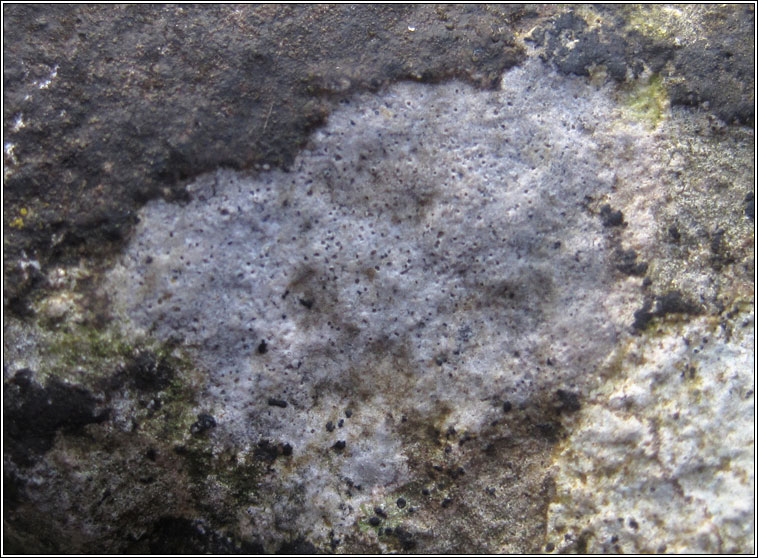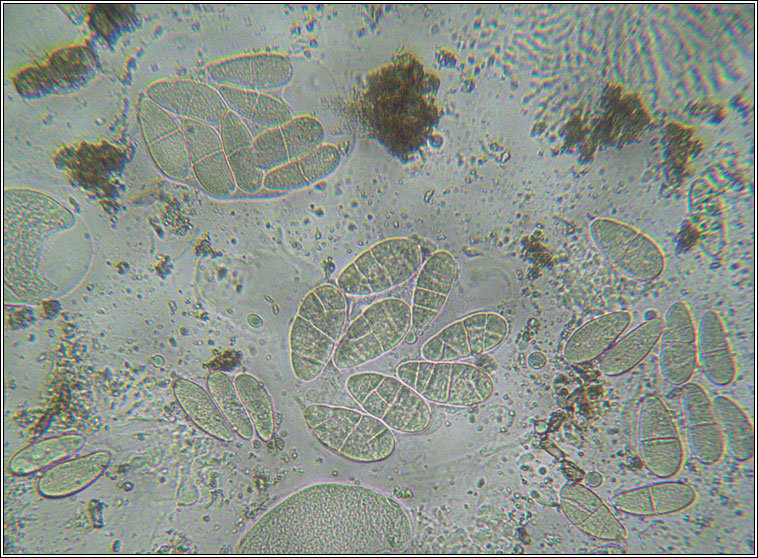
|
Verrucariaceae
Polyblastia dermatodes Growth type crustose. Identified by Brian Coppins Chemical results negative. BLS conservation evaluation: LC NS Frequent on limestone and other calcareous rocks Endolithic white or greyish thallus with immersed perithecia in well-defined pits. Spores submuriform 25-50 x 12-25 µm with 3-4 transverse and 1-2 longitudinal septa (6-14 cells visible in section). Micrographs below. Very difficult to separate from Thelidium incavatum which has spores that are usually 3-septate with only very occasional longitudinal septa. Both species are under revision as they are possibly synonymous. |


Microscope photographs



Polyblastia dermatodes
Wimborne, Dorset. February 2017